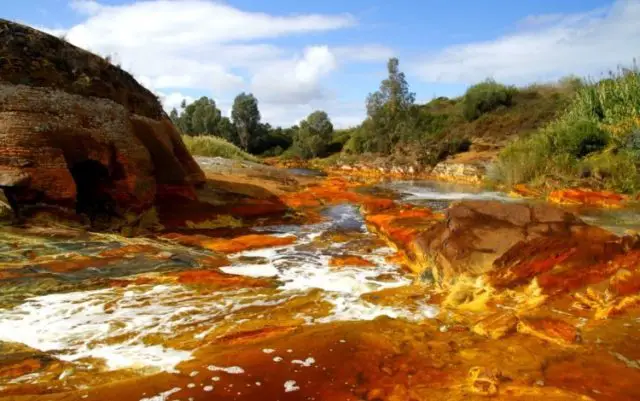Costa Rican scientist Alejandro Arce Rodríguez is one of the researchers at the Technical University of Braunschweig in Germany who has worked in search of signs of life on other moons and planets in the Solar System.
How do they do that?
The Costa Rican, graduated from the Technological Institute of Costa Rica (TEC) in the Biotechnology Engineering degree, alongside other 15 scientists, take samples of life in extraordinary places on the planet, where living conditions are extreme for the outcrop of almost any living organism.
In this case, the research was carried out in the Iberian pyritic fringe in southern Spain, where the popular Tinto River flows. This is the closest place to Mars on Earth, and where the landscape looks like the setting for a movie of an extraterrestrial world.
“I reiterate, from a mineral and geological point of view, the Iberian pyrite strip is the most similar place to Mars on Earth. Thus, for example, the amount of iron oxides is very high and the oxygen concentrations are extremely low, to the extent that it is lowered by the subsurface of the continental soil”, explained the biotechnologist.
After 6 years of research, the results were “surprising” and published in the scientific journal “Proceedings of the National Academy of Science of the United States of America”, one of the most prestigious worldwide. “The great discovery is that the iron oxide and sulfuric acid characteristic of the water that give the Tinto river its reddish color are produced by underground life forms in the pores of the rock: we discovered cyanobacteria!”, said the engineer.
The surprising thing is that until now, cyanobacteria only lived where there was presence of sunlight, at least occasionally, since their life process is carried out through photosynthesis. In this way, they can be easily found in seas, rivers or deserts.
However, this underground life was discovered after drilling the rocky continental subsoil 420 meters and 607 meters deep. “The simple fact of finding life at those depths is already surprising”, he said.
But how does this kind of life do to live, eat, and generate its own energy?
“It is just what we want to understand, because this could be happening on the Red Planet,” he said. “We assume that from the hydrogen consumed by cyanobacteria as an energy source, other types of energy source are generated, nitrogen or carbon, which is used so that other microorganisms can live in the flow of the Tinto river,” he explained.

The samples were obtained with two perforations from the IPBSL project (Iberian Pyrite Belt Subsurface Life, underground life in the Iberian Pyrite Belt), carried out between 2010 and 2015 with the aim of characterizing the geo-microbiology of the deep ecosystems in this area.
The present day
The samples are analyzed jointly between the Center for Astrobiology in Madrid, the Technical University of Braunschweig and the Helmholtz Institute for the Study of Infections in Germany, in a slow and laborious process. “Cultures of these bacteria are very difficult, since only 1% are cultivable and it can take months, even years, for a measurable activity to emerge”, explained the engineer.
In any case, scientists are trying to detect some of the key compounds for the blossoming of life on Mars. One of the main discoveries was the presence of hydrogen trapped in the pores of the rock, which decreases in the presence of cyanobacteria, since they use it as an energy source.
Today, Mars is not the only body in the Solar System that catches the attention of researchers; so does Saturn’s moon Titan, or Jupiter’s moon Europa, which have become objects of study for astrobiologists. Precisely, in 2005, the European Space Agency (ESA) sent the Huygens probe, which already found liquid methane on the surface of the largest of Saturn’s satellites.
The best part: He is not the only Costa Rican scientist working in research centers abroad
Alejandro Arce is not the only Costa Rican scientist graduated from the Biotechnology career at the TEC who works abroad. Currently, 50 more Costa Ricans work in the most important research centers around the world. Out of these scientists, about 60% are women.
“This is a pride not only for TEC but for Costa Rica. This shows that first-rate scientists are also trained at a public university in a small country”, said the researcher and former director of the Center for Research in Biotechnology of the TEC, Miguel Rojas.

